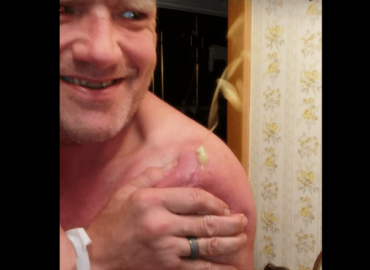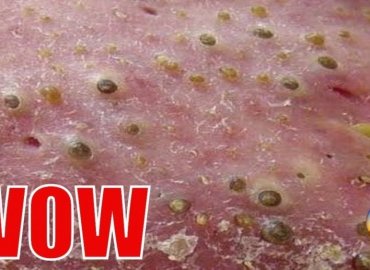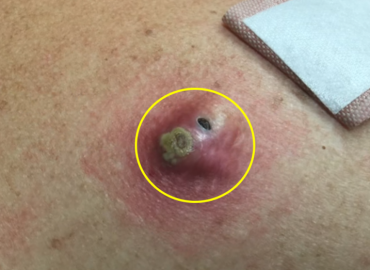An epidermoid cyst (Epidermal Inclusion cyst, Infundibular cyst), is a benign growth commonly found in the skin and typically appears on the face, neck or trunk, but can occur anywhere on the body. Another name used is “sebacous cyst” but this is actually an antiquated misnomer, and is not a term used by dermatologists. They are also the most common type of cutaneous cysts. Epidermoid cysts result from the reproduction of epidermal cells within a confined space of the dermis. The pasty contents are mostly composed of macerated keratin (wet skin cells), which creates this “cheesy” consistency, and there can be a pungent odor. An epidermoid cyst may have no symptoms and are typically harmless. Usually people seek removal because they don’t like the appearance of these bumps, or the cyst has ruptured or been inflamed or “infected” in the past. Rupture is associated with sudden redness, pain, swelling, and local heat, and can lead to abscess formation. Also, a history of inflammation, often increases scar tissue in the area, makes the cyst more firmly adherent to surrounding skin, and makes it more difficult to remove. Surgical excision is curative, but the complete cyst removal including the entire cyst sac and contents need to be removed to ensure that the cyst won’t reoccur.
What are epidermoid cysts?
Epidermoid cysts, also called sebaceous, keratin, or epithelial cysts, are small, hard lumps that develop under the skin. These cysts are common. They grow slowly. They do not cause other symptoms and are nearly never cancerous. Epidermoid cysts are often found on the face, head, neck, back, or genitals. They can range in size from 1/4 inch to 2 inches across. They look like a small bump, are tan to yellow in color, and are filled with thick, smelly matter. They do not cause any pain and can usually be ignored.
What causes epidermoid cysts?
Epidermoid cysts are usually caused by a buildup of keratin. Keratin is a protein that occurs naturally in skin cells. Cysts develop when the protein is trapped below the skin because of disruption to the skin or to a hair follicle. These cysts often develop in response to skin trauma, HPV infection, acne, or excessive exposure to the sun. An epidermoid cyst is more likely to develop in people with acne or other skin conditions.







